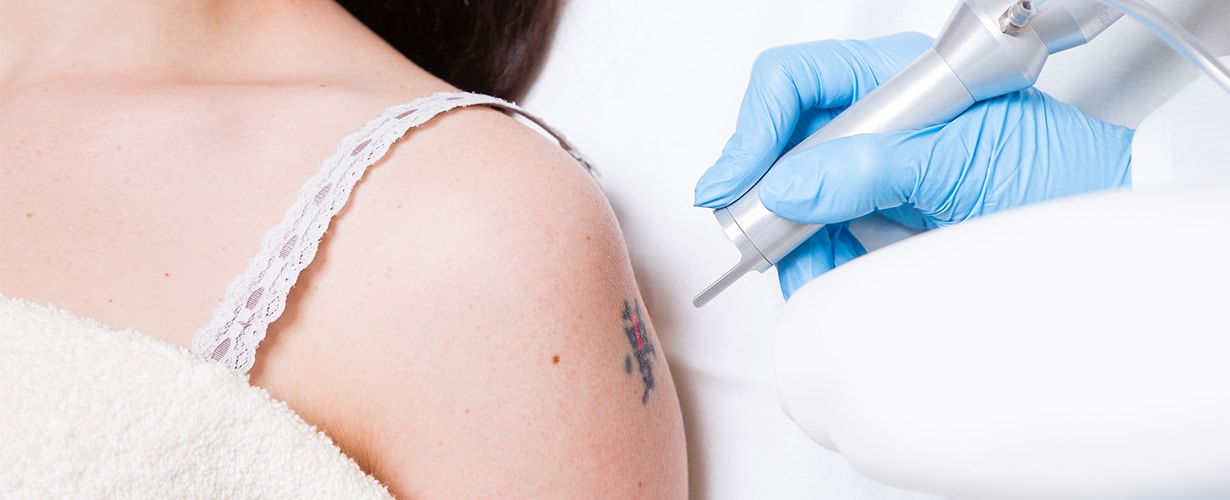
Tattoos no longer have to be permanent. The Q-switched laser light is absorbed by the ink in the tattoo. The energy breaks the ink into tiny fragments. Following your treatment your body’s natural immune system will go to work absorbing and removing the ink fragments.
The Laser Tattoo Removal Procedure
A few hours before the laser tattoo removal procedure begins, it is recommended that acetaminophen be taken to help minimize discomfort. Just before the procedure begins, the patient is given protective eyewear to protect his or her eyes from the laser. A topical anesthetic is then applied to the skin. The tattoo removal specialist then tests the skin’s response to the laser to determine the most effective approach, and intense nanosecond pulses are sent from the Q-switched laser to the skin.
The length of the tattoo removal session depends on the size of the tattoo. A topical antibiotic and a bandage are then applied. Patients are advised to keep the skin around the tattooed area dry, and to treat it as if it were sunburned.
Results And Risks Of Laser Tattoo Removal

Depending on the complexity of the tattoo, removal results vary. Tattoos with black ink may be eliminated within six treatment sessions, while more complicated tattoos might require ten or more. Although they rarely occur, there are certain side effects associated with laser tattoo removal. They include hyperpigmentation, hypopigmentation, infection and permanent scarring.

